Speaking of the signs of Beijing, there are countless innumerable buildings, buildings that rise from the ground, and the city skyline that is full of colors and colors, is Beijing’s unparalleled style. However, every time I talk about the historical signs of Beijing, the Hutong is definitely a must-see. In the past, the old folk customs and the simple feelings of the residents have all solidified in this narrow and intricate alley, quietly entrenched in the city, and become a bloodline of Beijing. Today, Xiaobian will take you to the streets and alleys to visit the most famous ten hutongs in Beijing and awaken the memories of Beijing’s past lives.The Top 10 Most Popular Alleys In Beijing are these:
Nanluoguxiang 南锣鼓巷
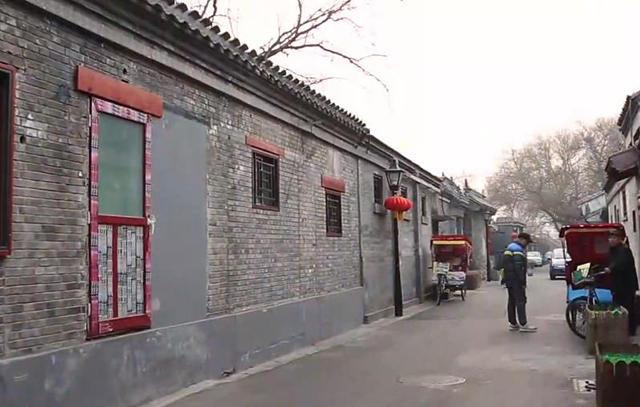
Nanluoguxiang is a very old street in Dongcheng District of Beijing. The streets of Nanluoguxiang are not wide, and the planning of Yuandadu Street and Hutong is still maintained. Its south exit is on Di’anmen East Street and the north exit is on Gulou Street. It was built in the Yuan Dynasty and is about 1000 meters long from north to south. There are 8 symmetrical hutongs in the east and west, neatly arranged on both sides. It looks like a raft from the shape, so it is also known as “Wugong Street”, which is the key protection house in Beijing. street. From the south to the north, the eight hutongs on the east side are: Miaodou Hutong, Banchang Hutong, Dongmian Hutong, North Mars Hutong, Qin Lao Hutong, Qianyuan En Temple Hutong, Houyuan En Temple Hutong, and Juer Hutong. The eight hutongs on the west side are: Fuxiang Hutong, Yuyi Hutong, Yuer Hutong, Maoer Hutong, Jingyang Hutong, Shajing Hutong, Black Sesame Hutong, Qiangulouyuan Hutong.
In the Yuan Dynasty, the capital city was planned to be 50 Square. The location of the current Nanluoguxiang is the dividing lane between the two squares of “Zhaohuifang” and “Jingxiangfang”. In the Ming Dynasty, the inner city of Beijing was divided into 28 squares, and the “Zhaohui” and “Jing Gong” two squares were merged, which was called “Zhaohui Jinggong Square”. The location of Nanluoguxiang is the north-south center line of the square. Luoguo Lane.” This name may have been from the Yuan Dynasty. In the fifteenth year of Emperor Qianlong (1750), the “Full Map of Beijing” has renamed Luoguo Lane in the Ming Dynasty as Nanluoguxiang, and the street opposite the Nanluogu Lane in the middle section of Gulou East Street is called “North Luogu Lane”. Beiluoguxiang was the junction of “Lingfangfang” and “Jintaifang” in the Yuan Dynasty. The Ming Dynasty was still two squares. The southern half of the two squares were both official offices and monasteries in the Yuan Dynasty, and there was no major change in the Ming Dynasty. In the early Qing Dynasty, the South and North Luogu Lanes were all inlaid with yellow flags. The Qing court stipulated that Beijing soldiers and people belong to the city, and the Eight Banners soldiers lived in the inner city, and the Han people lived in the outer city. The name of the Nanbei Luogu Lane should be earlier than the fifteen years of Qianlong, when it was in the early Qing Dynasty.
From the early Qing Dynasty to the 1930s and 1940s, more than 10 hutongs in Nanluoguxiang were gradually developed from the Manchu-inlaid Huangqi household. There are both large families and many small households, and the residents are gradually dense. The small business in Nanluoguxiang has also developed, including a grain store, a vegetable shop, a salt shop, a pork shop, a mutton shop, a sliced shop, a steamer shop, a fried house (making a coke ring, a fried ghost). , tofu room, coal shop, well nest, brick and tile cloth shop, mat foil shop, shed shop, black and white iron shop, hi car shop, bar room, medical hall, medicine shop, paste shop, hairdressing shop, ready-to-wear shop, shoes Shop, velvet shop, stationery shop, tea house, pawn shop, etc. Although the scale is not large, nearly 30 industries are relatively complete. As for the big business names such as satin shop, tea shop, big hotel, gold shop, silver number, etc., it is gathered in Di’anmenwai Street and Drum Tower.
Smoke bag oblique street 烟袋斜街
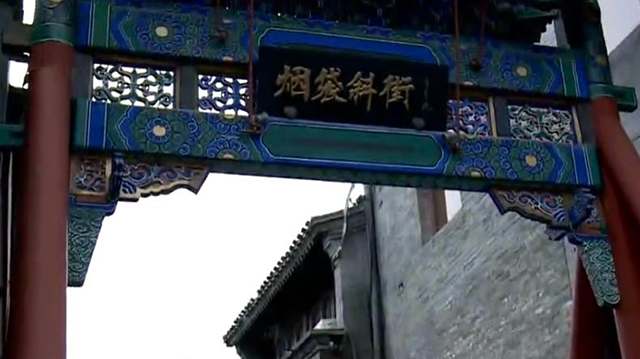
The Yantai Street is located in the core area of the Shichahai Historical and Cultural Protection Area. It is located in the east of Di’anmen Street and west of the Shichahai foreshore. It is nearly 300 meters long and is listed as one of the eight characteristic commercial streets in 2007.
It is said that the banner people who lived in Beicheng at that time mostly liked to smoke or shisha, and the tobacco leaves were packed in cigarette bags. As the demand for cigarette bags increased day by day, a household was opened on the sloping street.
In addition, the slanting street of the cigarette bag is like a cigarette bag. The slender street looks like a smoke bag, adjacent to Houhai, north of Di’anmen, the front face of the Drum Tower, and the oldest diagonal street in Beijing, called the Yantai Street. This street runs from east to west and is about three hundred meters long. In the early years of the Ming Dynasty, this street was called “The Fish Street East Street”. In the book of the “Old Japanese Texts” published in the Qianlong period of the Qing Dynasty, it was called “Drum Tower Inclined Street”.
But then why did the name of the cigarette bag slanting the street? The people who lived in the north of the city had the hobby of smoking, and the tobacco industry in Beijing was developed. Smoking is about using cigarette pouches, and people living on the sloping streets have spotted the market and opened a cigarette shop.
After a long time, the “fishing hall oblique street” and “Drum Tower oblique street” gradually disappeared, and the “smoke bag oblique street” is more and more loud.
The entrance to the east head is like a cigarette pocket, and the west entrance is folded to the south, leading to the Yinding Bridge, which looks like a smoky pot. It is precisely because of these two reasons that the name of the “smoke bag” oblique street is really worthy of the name.
Cap Hutong 帽儿胡同
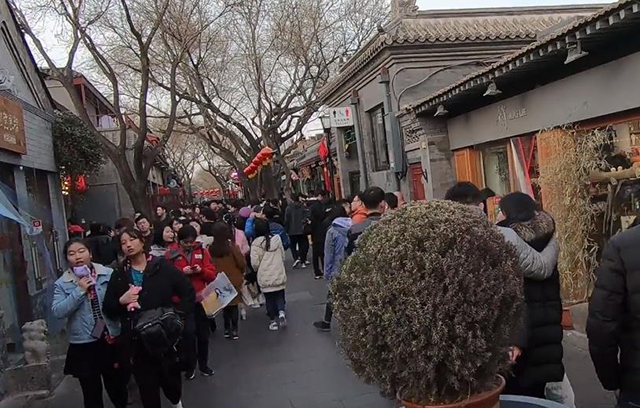
Maoer Hutong belongs to the intersection of Dongcheng District, Beijing. It starts from Nanluoguxiang in the east and ends at Di’anmenwai Street in the west. The north is connected with the bean hutong, and the south and the east are not connected to the bridge. In the Ming Dynasty, the Wenchang Palace Hutong of the Temple was named after the Wenchang Palace. In the Qing Dynasty, due to the hat-making workshop, it was renamed the Maoer Hutong. The No. 7th, 9th, and 11th courtyards of Maoer Hutong were originally the home garden of Shi Wenyi of the University of Qing Dynasty. The 13th House is the former residence of Feng Guofan. The 35th and 37th courtyards were originally the Qing Xuantong Queen’s mother, the Cheng Engong, commonly known as Niangniang. Court No. 45 was originally the Tuen Mun Admiral of the Qing Dynasty.
The existing courtyard houses in Maoer Hutong are: Maoer Hutong No. 5, Maoer Hutong No. 9 (Keyuan), Maoer Hutong No. 11 (Wenyu House), Maoer Hutong No. 13 (Feng Guofan’s former residence), Maoer Hutong 21 No. (Yangmong Wenchang Palace Site), Maoer Hutong No. 37 (Former Residence of Rong Rong), No. 45 of Maoer Hutong (Qing Tiguan Tuen Mun, Republic of China Security Team).
At the beginning of the Maoer Hutong, it also intersects with the famous Nanluoguxiang. In the past, there was the famous Juer Hutong, the first military auxiliary of the year, and the university’s Ronglu’s government was there. There is a famous cigarette bag alley on the tail, so if you want to come here and feel the atmosphere of the old Beijing city, the hat alley is a good choice.
Guozijian Street 国子监街
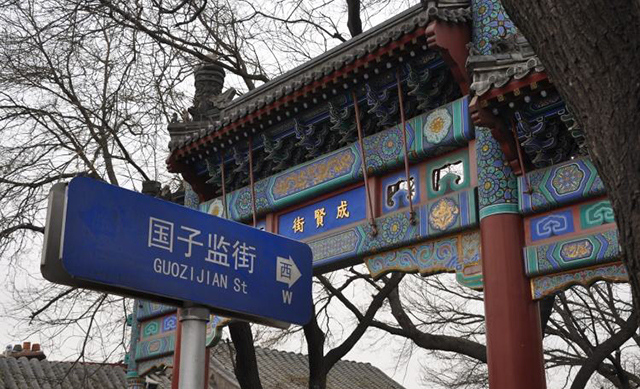
Guozijian Street is east-west, between Lama Temple Street and Andingmen Inner Street. Formed in the early years of the Yuan Dynasty, in the Ming Dynasty, Guozijian Street was not called, only called “Guozi Jiankong Temple.” When the Qing Emperor Qianlong was called the Guozijian, it has not changed. Although the archway of the two sides of the street is entitled “Chengxian Street”, it has never been able to spread as an official place name. Most people still do not know that Chengxian Street is the Guozijian. In 1965, it was called Guozijian Street. During the Cultural Revolution, it was called the nine red roads. Guozijian Street preserves the appearance of the old Jingjie Street. The Confucius Temple and the Guozijian were named here. In 1984, it was designated as a Beijing-level cultural relics protection unit. Today, Guozijian Street is one of the few old streets in Beijing. The towers that stand tall, the ancient temples that are sandwiched, and the large houses and temples on both sides are antique, quiet and quiet, and the ancient city is full of charm.
Guozijian Street is the only street in Beijing where there are archways. There are four archways on the street, one at each of the east and west streets. The title is “Chengxian Street”, and there is a nearby one near the Guozijian. The title is “Guozijian”. On the street of Guozijian, there is also the Han Wengong of Han Yu, a great writer of the Tang and Tang Dynasties, the Temple of Fire, which was built in the Ming Dynasty, and the Zaojun Temple of the King of the Kitchen.
The Guozijian was founded in the Yuan Dynasty (1306). It is the highest institution established by the three generations of the Yuan, Ming and Qing Dynasties. It is also the organ that rules the national academic decree. Guozijian has teaching subjects such as ritual, music, law, shooting, imperialism, books, and numbers. If people at that time can go to school in Guozijian, it is considered to be Guangzong Yaozu. The highest eunuch of the Guozijian said that the wine was sacrificed. Xu Heng, a famous scholar of the Yuan Dynasty, had made the sacrifice here. The cypress trees he planted have survived for centuries.
Liulichang 琉璃厂
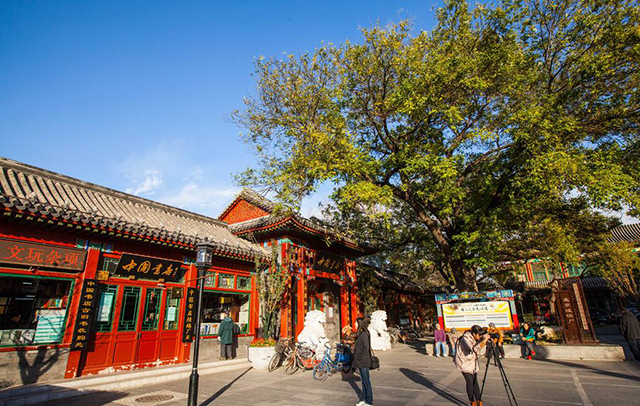
Liulichang is located in Xuanwu District. 1 km from Tiananmen Square. Liulichang starts from the north and south Liuliu alleys and east to Yanshousi Street, with a total length of 800 meters. Liaojin is called Haiwang Village. In the Yuan and Ming dynasties, the official kiln was built here to burn the glazed tiles used to build the palace. It is called the “glazed factory”. During the reign of Emperor Kangxi and Qianlong, the famous cultural street with the essence of antiques was gradually formed. The name of the “Flame Factory” has been preserved since the Qing Dynasty. It is a famous historical and cultural tourist attraction that displays traditional Chinese culture, especially calligraphy and painting.
In the Qing Dynasty, most of the officials of the Han nationality lived outside Xuanwumen, west of the Liulichang, and the halls where the exams were held were also nearby. Their demand for books is very large, so the Liulichang became the largest book market in Beijing at that time. During the Qianlong period, the “Siku Quanshu” was repaired. Local books and bureaus have set up stalls and shops here, selling a large number of books and promoting the development of the Liulichang Cultural Street. By the second year of Guangxu (1876), the bookstore had grown to more than 270. In the early years of the Republic of China, nearly 200 shops and workshops for the management of cultural goods formed a cultural street that was well-known at home and abroad.
Goldfish Hutong 金鱼胡同
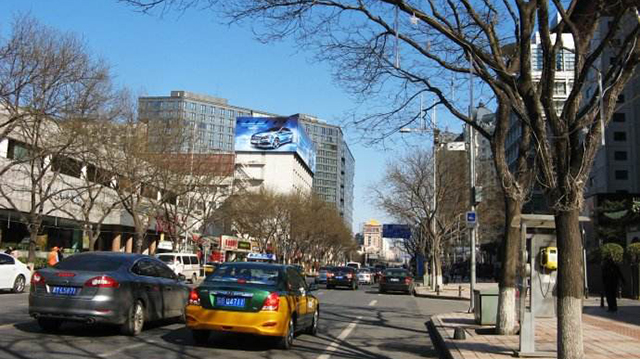
Jinyu Hutong is located on the south side of Dengshikou Street. It is under the jurisdiction of Donghuamen Sub-district Office and is east-west. East from Dongdan North Street, west to Wangfujing Street, south to the campus of Hutong Hutong, north to Xitangzi Hutong. It is 567 meters in length and 12 meters wide in the west mouth (44 meters wide in the east mouth), asphalt pavement.
Goldfish Hutong, Ming Dynasty is a clarification workshop. The Qing Dynasty was inlaid with a white flag. In the “Cultural Revolution”, it was renamed Ruijin Road nine, and then restored to its original name. Hutong West Gate is connected to Wangfujing Street, which is bustling and bustling. Dong’an Market also has a north gate in Hutong. The famous Auspicious Theatre and Donglaishun Restaurant are located here. In the hutong, there is the government of the late Qing Dynasty University, which is commonly known as the garden. In 1988, the Peace Hotel and the Wangfu Hotel were expanded, and half of the goldfish alley was demolished. The garden was also demolished. There is a Yinliang Temple in the middle of Hutong Central Road, which is one of the eight temples in Beijing. The Yinliang Temple was founded in the 12th year of Qing Emperor Yongzheng (1734). Originally in the west of the school hutong, it was the Prince’s Mansion. In the 20th year of Emperor Qianlong (1755), the temple was built here. Shanmen opened in Shuaifu Hutong, about the east side of Wangfujing Quanjude Roast Duck Restaurant today. Because the temple is closer to the Imperial City, the provincial bureaucrats went to Beijing to report, mostly in this. At the end of the Qing Dynasty, Li Hongzhang lived and worked here. There are many existing buildings in the temple. Today’s goldfish alley, the road is spacious, the streets are lined with tall Taiwanese restaurants, peace hotels, Wangfu hotels, and the sights of the old alleys have not existed.
Dongjiaominxiang 东交民巷
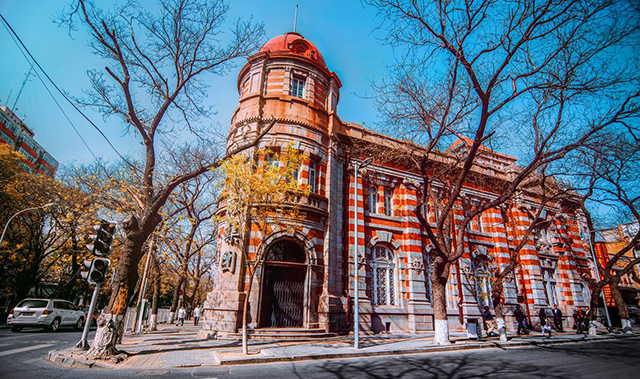
Dongjiaominxiang is an alley in Dongcheng District, Beijing. It was originally called Dongjiang Mixiang because it was a place of transportation in the old days.
Hutong starts from Tiananmen Square East Road in the west and Chongwenmen Inner Street in the east. It is nearly 3 kilometers long and is the longest alley in old Beijing.
During the Yuan Dynasty, Dongjiaominxiang and Xijiaominxiang on the west side of the square were connected together in an alley called “Jiangmi Lane”. Since the hutong at that time had the tax office and customs of the Yuan Dynasty to control the transportation of rice into Beijing, it became the throat of Nanliangbeiyun, hence the name Jiangmi Lane. In the Ming Dynasty, the chessboard world was built, and the original Jiangmi Lane was cut into Dongjiang Mixiang and Xijiangmi Lane. In the Dongjiang Mixiang, there are six rituals in the middle of the ritual, as well as the Hongjun Temple and the Guild Hall, but mainly accepting the envoys from four countries including Annan, Mongolia, North Korea and Myanmar. Therefore, the Guild Hall is also known as the “Siyi Pavilion”. In the Qing Dynasty, the Guild Hall was renamed the Four Translation Pavilion, and the policy was amended to allow only foreign envoys to live here for forty days.
Dongjiaominxiang was originally the seat of the “five parts and six houses” of the Ming and Qing Dynasties. During the Qianlong and Jiaqing periods, there was a “Welcome Hotel” for foreign embassies to temporarily reside. After the Opium War (1840), the embassies of Britain, Russia, Germany, and France were established in this area. After 1901, they became embassy streets. The 11 countries including Britain, the United States, and France established joint administrative agencies in the lanes. “Citibank of the United States”, “Connefloc Bank of France”, “British HSBC”, “Japan Zhengjin Bank” and churches, hospitals, etc., this history has left many different styles of Western architecture, also attracted Many overseas people.
Xijiaominxiang 西交民巷
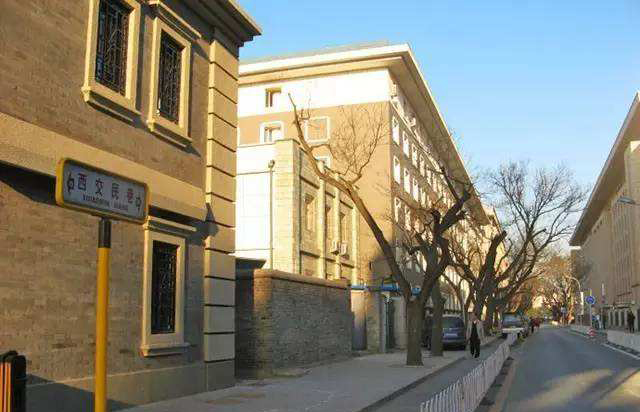
Xijiaominxiang is located in the south of Xicheng District. It starts from Tiananmen Square in the east, and goes to Xinhua Street in the west. It intersects with Wool Hutong, Qianweiwachang Hutong, Yuer Hutong, Pingan Hutong, West Hall of the Great Hall of the People, and the Hutong Hutong. The total length is about 1080 meters. In the Ming Dynasty, it was called Xijiang Mixiang, and the north of the street was distributed by the central government agencies such as the Five Army Dudu, Taichang Temple, Tongzheng, and Jinyiwei. In the Qing Dynasty, the homonym was changed to the West Jiaomin Lane. At the end of the Qing Dynasty and the beginning of the Republic of China, the West Jiaomin Lane was known as the Bank Street. During the period of the Republic of China, it was adjacent to the Beiping District Court, the Ministry of Justice (later moved to Nanjing), and the Higher Judicial Office. On April 28, 1927, Li Dazhao was secretly killed by the warlord Zhang Zuolin in the Jingshi Detention Center in the street. In the street, there are Zhang Tingge House (Shuanghesheng Winery owner’s house), the former site of the Central Bank Beiping Branch, the former site of China Agricultural and Industrial Bank, and the former site of the mainland bank and the former site of Beiyang Baoshang Bank (the two were converted into the new museum of China Coin Museum in 2002). And other cultural relics protection units.
Juer Hutong 菊儿胡同
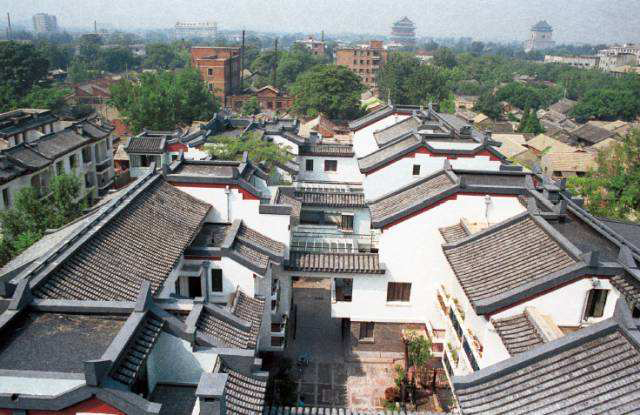
Ju’er Hutong is located in the northwest of Dongcheng District, east of Jiaodaokou South Street, west to Nanluoguxiang, south to Houyuan En Temple Hutong, north to Shoubi Hutong, and is under the jurisdiction of Jiaodaokou Sub-district Office.
Juer Hutong, Ming Dynasty belongs to Zhaohui Jinggong Square, called the bureau Hutong. The Qing Dynasty was inlaid with the yellow flag, and the Qianlong was called the Orange Children Alley. Orange, two sounds. Read “Jie” first; read “Orange”. Orange is the common name of orange. Here, when the latter is the case, Xuantong called the Juer Hutong. The rear of the Republic of China is called. In 1965, when the name was reorganized, it was renamed the second section of Jiaodaokou. In the “Cultural Revolution”, it was renamed the Eight Great Leap Forward Road, and it was restored to its original name. In 1979, Xiao Juer Hutong was merged and renamed Juer Hutong.
Juer Hutong must enjoy the landscape:
No. 3 Courtyard, No. 5 Courtyard, No. 7 Courtyard of Ju’er Hutong is the official residence of the Governor of the Qing Dynasty. No. 3 is a ancestral hall, No. 5 is a residence, and No. 7 is a garden. Rong Lu moved to the East Factory Hutong. The 7th House has served as the Afghan Embassy. The No. 41 courtyard was originally a temple. It is rumored that the monk in the temple is the emperor’s replacement.
Bada Hutong 八大胡同
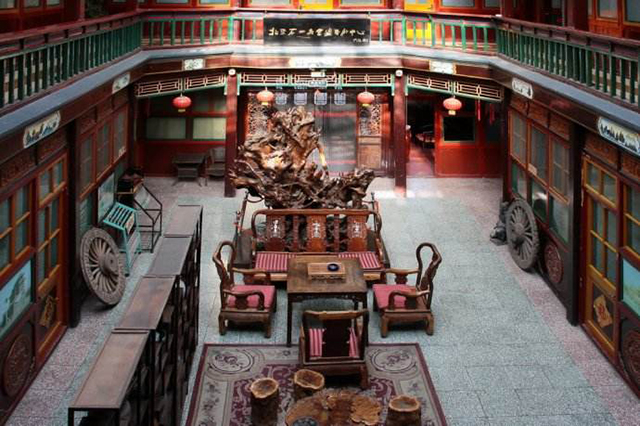
Bada Hutong are the name of the old Beijing Huajie Liuxiang, located in the west of the Dashiguan Guanyin Temple outside the Qianmen. The “Big Eight” is a virtual finger. At least fifteen hutongs in the region belong to the “red light district” of old Beijing. The recognized eight major alleys are: Baishun Hutong, Rouge Hutong, Hanjiatan (now Hanjia Hutong), Shaanxi Lane, Stone Hutong, Wang Guangfu Xiejie (now known as Palm Tree Street), Zhujia Hutong, Li Sha Mao Hutong (current name Vigorous Hutong, Xiaoli Hutong).
The Eight Great Hutongs have never been a legal place name. In the past, men said that they went to the Eight Great Hutongs. Consciousness tells you what he wants to “do” rather than “where to go”. The eight major alleys in the late Qing Dynasty and the early Republic of China had two concepts. From the point of view of the righteousness, the so-called Eight Great Hutongs were not the name of a certain alley, but were composed of eight alleys. Because the Chinese love to classify similar things and then say a few, such as the Eight Bridges of the Overpass, the Eight Great People of Tang and Song Dynasties, the Badaxiang, and the Eight Views of Yanjing. In fact, the word “eight” is an imaginary number here, but it means more. These eight hutongs are located near the front gate of the Dashilan.